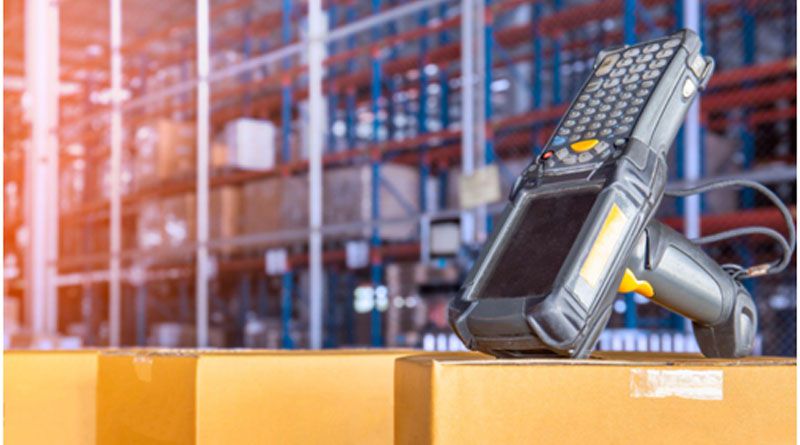Every day, the world economy feels another ripple of the COVID-19 crisis. Supply chain disruptions continue to create headaches, and they appear in unpredictable ways that leave managers and workers scrambling. One consequential but less-discussed aspect of these disruptions is a shortage of warehouse devices like barcode scanners.
Any warehouse professional can attest to just how important these devices are in conducting day-to-day operations. Whole supply chains depend on them to make warehouses work fast and accurately. Problems can multiply quickly without them, which is why businesses have to take proactive steps to address the shortage within their own organizations.
Why Is There a Warehouse Device Shortage?
The shortage of warehouse devices has its roots in several different (but interrelated) types of supply chain disruptions. With the worldwide logistics market in a volatile state, components ranging from microchips to plastic enclosures for electronics are currently in short supply.
- Chip Shortage: COVID-related production issues, especially in China, have created the worst shortage of microchips and semiconductors in recent memory. The auto industry has been hit the hardest, but warehouse devices use chips as well. Unfortunately, some experts say that it might be 2023 before these shortages get resolved.
- Materials Shortage: The raw materials used to manufacture device components have also been subject to shortages. Even standard materials like plastics are increasingly pricey and hard to source, which means manufacturers of all kinds of electrical and electronic components are struggling with their supply chains. In turn, that leads to shortages of essential components like NEMA 1 enclosures.
- Labor Shortage: We’re also seeing the continued effects of a labor shortage at every level of the manufacturing supply chain. Truckers are particularly scarce, leading to huge back-ups in ports around the country. However, the skilled manufacturing labor gap also affects everyday operations on the factory floor and creates significant downstream problems.
- High Demand: As eCommerce spending continues to increase, more businesses are increasing warehousing capacity. That means that, as with many other electronic devices, demand for scanners and other warehouse devices is outstripping supply. They may not have the marquee status of game consoles or cars, but they’re unquestionably vital for healthy and efficient supply chains.

Navigating the Warehouse Device Shortage
As the economy continues to weather the effects of the pandemic, there’s no guarantee that the device shortage will improve any time soon. Here are some steps that can help businesses work around the shortage while refining their warehouse operations.
1. Be aware of market conditions for the devices you use.
Communicate with the vendors that you usually purchase your devices and components from. Contact the sales reps you usually work with and learn about whether they’re having trouble filling orders. Consider placing orders farther ahead than you normally would and possibly ordering in larger quantities.
2. Think about replacing barcode scanners with RFID.
Barcode scanners are still the standard choice for many businesses, but others have moved to an RFID-based system. (That’s the same technology inside your key fob case that opens your vehicle.) Supply of RFID scanners has also been constricted by the chip shortage, but their improved efficiency means that your business might not need as many.
3. Care for your existing stock of devices.
If the warehouse device shortage is affecting your industry, focus first on caring for the assets you have currently. Make sure that all warehouse devices are properly placed in their charging cradles at the end of the day, and install software updates as soon as they’re available. Adding RFID trackers to warehouse devices themselves can also be a useful tool for businesses that struggle with tools going missing or being stored out of place.
4. Plan ahead if you’re expanding warehouse capacity.
Adding more warehouse capacity often requires purchasing more scanners and other warehouse devices. If your plans for 2022 include expanding your capacity, make sure that you plan for navigating potential warehouse device shortages. Arrange with your vendors to get warehouse devices reserved as far ahead as possible, because many will likely remain backlogged well into 2022.
5. Consider purchasing used scanner devices.
If your facilities need RFID or barcode scanners on short notice, don’t forget to check for used options. Prices will still likely be elevated in the current market, but it’s important to keep all options on the table. Of course, this also makes it important to verify that a given device will be compatible with your established inventory system.
6. Reduce the number of points at which items need to be scanned.
Some businesses may be able to reduce the number of touchpoints requiring a scanner. For example, does an item need to have its barcode or RFID chip scanned by the picker and the packer? In some systems, the answer will be yes, it’s necessary. In others, however, the extra touchpoints simply aren’t adding value to the process. Look at the configurations that your warehouse management software offers and investigate how you can reduce the number of devices needed.
7. Investigate alternatives to traditional scanner systems.
Make sure you consider options other than traditional scanners, particularly if you have a small business or are evaluating new options for inventory systems. For example, smartphone apps are now available that allow users to scan a barcode or QR code using the phone’s camera. In some operations, particularly if your employees already have work phones, smartphone apps could be a potentially viable alternative to other scanner devices.

Warehouses, like all other businesses, must react to the pandemic-related disruptions with an eye toward opportunity and innovation. Getting stuck in your ways is not an option, so evaluate how warehouse devices are a part of your process and figure out ways to weave them in differently.

Namaste UI collaborates closely with clients to develop tailored guest posting strategies that align with their unique goals and target audiences. Their commitment to delivering high-quality, niche-specific content ensures that each guest post not only meets but exceeds the expectations of both clients and the hosting platforms. Connect with us on social media for the latest updates on guest posting trends, outreach strategies, and digital marketing tips. For any types of guest posting services, contact us on info[at]namasteui.com.

